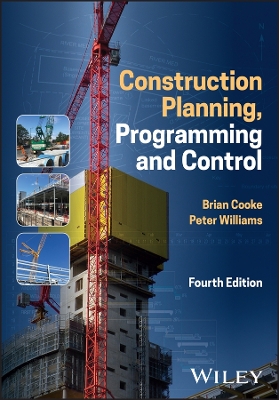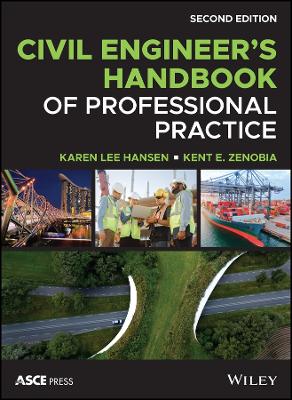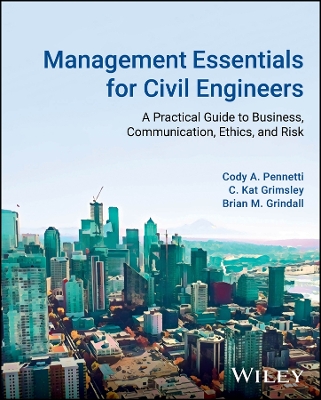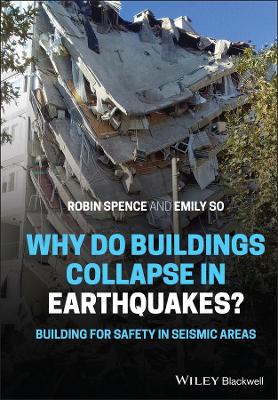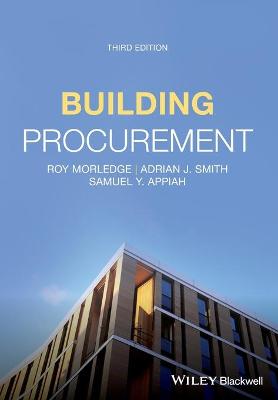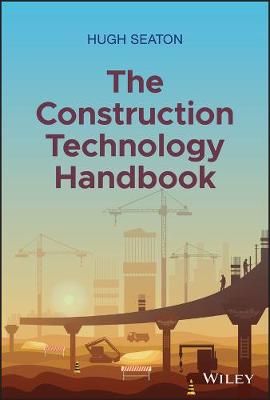Handbook for the Sustainable Use of Timber in Construction
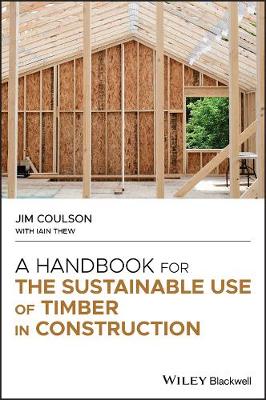 -15%
portes grátis
-15%
portes grátis
Handbook for the Sustainable Use of Timber in Construction
Coulson, Jim; Thew, Iain
John Wiley and Sons Ltd
12/2020
416
Dura
Inglês
9781119701095
15 a 20 dias
858
Descrição não disponível.
Preface xiii
Part One How Timber Works: Wood as a Material - Its Main Processes and Uses 1
1 Wood as a Material 3
1.1 Tree growth and wood formation 5
1.2 Cellulose, carbon dioxide, and oxygen 7
1.3 The essential cell structure of wood 9
1.4 Wood grain 11
1.5 Dimensional changes in wood 15
1.6 Cambium, pith, heartwood, and sapwood 17
1.7 Natural durability 20
1.8 Permeability in timber 21
1.9 Pits 24
1.10 Chapter summary 26
2 More on Wood - With Some Comments about Timber Trading 29
2.1 Should we call it 'wood' or 'timber' (or even 'lumber')? 29
2.2 Wood species and timber trading 30
2.3 Softwoods and hardwoods 30
2.4 Some more information on wood's cell structure 33
2.5 The significance of 'trade names' versus 'scientific names' 38
2.6 Growth rings 42
2.7 Earlywood and latewood 43
2.8 Rate of growth in softwoods 43
2.9 Rate of growth in hardwoods 45
2.10 Chapter summary 48
3 Two Fundamental Factors in Using Wood: Fire and Water 49
3.1 Wood and fire 49
3.2 Wood and moisture 54
3.3 Kiln drying 66
3.4 Air drying 69
3.5 Problems with timber as it dries 72
3.6 Timescales for drying timber 79
3.7 Chapter summary 81
4 Specifying Timber: For Indoor or Outdoor Uses - With Some Information on the Biological Attack of Wood 83
4.1 British and European standards 83
4.2 Durability and treatability of different wood species 84
4.3 Use classes 85
4.4 Examples of the use of timbers in different use class situations 86
4.5 Hazard and risk - and their relative importance 87
4.6 Use class 1: examples 87
4.7 Insects that can attack wood 91
4.8 Treatment against insect attack 94
4.9 Use class 2: examples 95
4.10 Use class 3: examples 97
4.11 Use class 4: examples 102
4.12 Wet rot and 'dry rot' 107
4.13 Modified wood 109
4.14 Use class 5: examples - plus two marine organisms which can eat wood 110
4.15 Chapter summary 112
5 Wood Preservatives and Wood Finishes 115
5.1 Rule number one: treat the timber last! 115
5.2 Wood preservative types 117
5.3 'Old' and 'new' treatments 117
5.4 Basic methods of timber treatment 117
5.5 Preservative chemicals 120
5.6 'Treated' timber 123
5.7 Chapter summary 131
6 Timber Quality: Defects in Wood and Grading for Appearance 133
6.1 The need for grading 134
6.2 'Quality' or 'grade'? 135
6.3 Quality 136
6.4 Grade 137
6.5 Different types of grading 137
6.6 'Appearance' grading 137
6.7 Appearance grading based on selection by inherent defects 138
6.8 Scandinavian appearance grades 141
6.9 Unsorted, fifths, and sixths 143
6.10 Russian appearance grades 144
6.11 Saw falling 145
6.12 European appearance grades 145
6.13 North American appearance grades 146
6.14 Clears, merchantable, and commons 148
6.15 A comparison of Scandinavian and North American grades 149
6.16 Appearance grading based on 'cuttings' 149
6.17 NHLA grades 150
6.18 Malaysian grades 154
6.19 Rules are made to be bent (within reason!) 157
6.20 Shipper's usual 157
6.21 J classes 158
6.22 Exposed face 159
6.23 Chapter summary 160
7 Strength Grading and Strength Classes 163
7.1 Appearance versus strength 166
7.2 Visual strength grades 166
7.3 GS and SS strength grades 167
7.4 Strength classes for softwoods 168
7.5 BS EN 1912 168
7.6 SC3, SC4: C16 and C24 169
7.7 Machine grading 171
7.8 Other strength grades: Europe and North America 172
7.9 Select structural, no. 1 and no. 2 structural, and stud grades 172
7.10 TR26 173
7.11 CLS 175
7.12 Specifying a strength class or wood species: things to think about 176
7.13 Hardwood strength grading 177
7.14 Tropical hardwoods 178
7.15 Temperate hardwoods 178
7.16 The 'size effect' 179
7.17 Hardwood strength classes 180
7.18 Marking of strength-graded timber 181
7.19 Chapter summary 183
8 Wood-Based Sheet Materials 185
8.1 Plywood construction 186
8.2 Two fundamental properties of plywood 186
8.3 The basic types of plywood 188
8.4 Problems with veneer 'layup' 192
8.5 'WBP' 192
8.6 Exterior 194
8.7 EN 636 plywood types 194
8.8 Adhesives used in plywood 195
8.9 BS 1088 marine plywood 196
8.10 Plywood glue bond testing 197
8.11 Plywood face quality 199
8.12 Appearance grading of face veneers 199
8.13 Plywood certification 202
8.14 Particleboards 205
8.15 Fibreboards 208
8.16 Chapter summary 212
9 Principles of Timber Engineering (by Iain Thew) 215
9.1 Timber as an 'engineering material' 216
9.2 Loads: their actions on structures 217
9.3 Load transfer 218
9.4 Bending, compression, and tension stresses 218
9.5 The use of strength classes 220
9.6 Load duration and its significance 222
9.7 Effects of timber moisture content on engineering properties 223
9.8 Load sharing 224
9.9 Deflection and 'creep' 224
9.10 Trussed rafters 225
9.11 'Engineered timber' joists 226
9.12 Glulam and LVL 227
9.13 Cross-laminated timber 229
9.14 Chapter summary 230
Part Two Using Timber and Wood-Based Products in Legal and Sustainable Way 231
10 Some Things You Should Know About Wood, Trees, and Forests 233
10.1 Some very basic comments on how trees grow 233
10.2 How long can trees live for - and how 'old' is an old tree? 235
10.3 The properties of different timbers 236
10.4 Distribution of tree types 236
10.5 Natural forests 238
10.6 Managed forests: conifers 242
10.7 Managed forests: broadleaved trees 245
10.8 Plantations: both softwoods and hardwoods 247
10.9 Planting trees to help with climate change 253
11 The Concept of 'Sustainability' 255
11.1 Being sustainable: a definition - and a target 255
11.2 What can we do to help? 258
11.3 Should we be cutting down trees? 259
11.4 Using the forest resource: the economic argument 262
11.5 Legal harvesting 263
11.6 The UK Timber Trade Federation and its 'responsible purchasing policy' 265
12 Voluntary Timber Certification Schemes 269
12.1 Some more details about the RPP 269
12.2 Checking legality I: the Corruption Perceptions Index 271
12.3 Checking legality II: FLEGT 275
12.4 Checking legality III: MYTLAS 277
12.5 Checking legality IV: other 'legality' certification schemes 278
12.6 Checking sustainability: chain-of-custody certification 280
12.7 UKWAS 286
12.8 Third-party assurance 287
12.9 How chain-of-custody schemes operate 287
13 UK Government, EU, and Other Countries' Regulations: Legally Trading in World Timbers 289
13.1 Checking up on the checkers: CPET and beyond 289
13.2 Help with legality and sustainability requirements in a UK context 290
13.3 The UK government's requirements for TPP 290
13.4 Category A and category B: 'proof of compliance' 291
13.5 Current and future supplies of certified timber 293
13.6 The EUTR: Europe's compulsory 'timber legality scheme' 294
13.7 Due Diligence 294
13.8 How to Satisfy the EUTR (or now, in the UK, the UKTR) 295
13.9 Putting together a due diligence system 297
13.10 Maintaining a due diligence system 298
13.11 'First placer on the market' 299
13.12 CE marking and the CPR 300
13.13 CITES: what exactly is It? 301
14 Softwoods Used in Construction - With Their Main Properties and Sustainability Credentials 307
14.1 European redwood, or scots pine (Pinus sylvestris) 308
14.2 European whitewood (principally Picea abies) 310
14.3 Sitka spruce (Picea sitchensis) 311
14.4 Western hemlock (Tsuga heterophylla) 312
14.5 'Douglas fir' (Pseudotsuga menziesii) 313
14.6 Larch (mainly Larix decidua and Larix kaempferi/Larix leptolepis) 314
14.7 'Western red cedar' (Thuja plicata) 315
14.8 Southern pine (Pinus spp., principally Pinus elliottii, Pinus echinata, Pinus palustris, and Pinus taeda) 316
14.9 Yellow pine (Pinus strobus) 317
14.10 Species groups 318
15 Some Hardwoods Used in Construction - With Their Main Properties and Sustainability Credentials 321
15.1 'Vulnerable' timbers 322
15.2 Timber names: a bit more information 323
15.3 Ash, American (Fraxinus spp.) 324
15.4 Ash, European (Fraxinus excelsior) 326
15.5 Ayan (Distemonanthus benthamianus) 326
15.6 Basralocus (Dicorynia guianensis or Dicorynia paraensis) 328
15.7 Beech, European (Fagus sylvatica) 328
15.8 Bilinga 329
15.9 Birch, European (mainly Betula pubescens, sometimes Betula pendula) 329
15.10 Cherry, American (Prunus serotina) 330
15.11 Chestnut, sweet (Castanea sativa) 330
15.12 Cupiuba 331
15.13 Ekki (Lophira alata) 331
15.14 Eucalyptus 332
15.15 Eveuss (Klainedoxa gabonensis) 332
15.16 Gedu nohor (Entandrophragma angolense) 332
15.17 Greenheart (Chlorocardium rodiei; formerly Ocotea rodaiei) 332
15.18 Guariuba (Clarisia racemosa) 333
15.19 Idigbo (Terminalia ivorensis) 333
15.20 Iroko (Milicia excelsa) 334
15.21 Kabukalli (Goupia glabra) 334
15.22 Kapur (Dryobalanops spp.) 335
15.23 Keruing (Dipterocarpus spp.) 335
15.24 Kosipo (Entandrophragma candollei) 336
15.25 Mahogany, African (principally Khaya ivorensis and Khaya anthotheca) 337
15.26 Mahogany, Central American (Swietenia macrophylla) 337
15.27 Maple (Acer saccharum) 338
15.28 Majau (Shorea spp.) 338
15.29 Massaranduba (Manilkara spp.) 338
15.30 Meranti (Shorea spp.) 339
15.31 Merbau (Intsia bijuga) 340
15.32 Missanda (Erythrophleum guineense and Erythrophleum ivorense) 340
15.33 Movingui 341
15.34 Oak, American red (principally Quercus rubra and Quercus falcata) 341
15.35 Oak, American white (principally Quercus alba and Quercus prinus, but also Quercus lyrata and Quercus michauxii) 341
15.36 Oak, European (mainly Quercus robur, but also Quercus petraea) 342
15.37 Obeche (Triplochiton scleroxylon) 343
15.38 Omu 343
15.39 Opepe (Nauclea diderrichii) 343
15.40 Padauk (Pterocarpus soyauxii) 344
15.41 'Red grandis' (really Eucalyptus grandis) 344
15.42 Sapele (Entandrophragma cylindricum) 345
15.43 Tatajuba (Bagassa guianensis) 346
15.44 Teak (Tectona grandis) 346
15.45 Tali 347
15.46 Tiama 347
15.47 Tulipwod 347
15.48 Utile (Entandrophragma utile) 347
15.49 Walnut, American (Juglans nigra) 348
15.50 Walnut, European (Juglans regia) 348
15.51 Whitewood, American or tulipwood (Liriodendron tulipifera) 349
16 The Use and Reuse of Timber and Wood-Based Products: The Carbon Cycle, End-of-Life Disposal, and Using Wood as Biomass 351
16.1 Should we 'save' all the trees? 351
16.2 The true 'carbon cycle' 352
16.3 End-of-life disposal of timber and wood-based products 353
16.4 Recycled timber 354
16.5 Disposal of timber in landfill 355
16.6 Burning wood: fossil fuels versus biomass 356
16.7 Biomass 357
17 Energy Considerations: Other Construction Materials Compared with Wood 361
17.1 Embodied energy 362
17.2 Cradle-to-grave analysis 364
17.3 Cradle to cradle: or the 'circular economy' 366
17.4 BREEAM 366
17.5 Assessment criteria 367
17.6 Contribution of timber to 'sustainable building' 368
17.7 The overall cost of being 'sustainable' 370
Appendix A A Glossary of Wood and Timber Terms Used in the Timber and Construction Industries 371
Appendix B A Select Bibliography of Some Useful Technical Reference Works, Plus Some Other Information on Timber and Wood-Based Products 385
Appendix C Some Helpful Technical, Advisory, and Trade Bodies Concerned with Timber 387
Index 389
Part One How Timber Works: Wood as a Material - Its Main Processes and Uses 1
1 Wood as a Material 3
1.1 Tree growth and wood formation 5
1.2 Cellulose, carbon dioxide, and oxygen 7
1.3 The essential cell structure of wood 9
1.4 Wood grain 11
1.5 Dimensional changes in wood 15
1.6 Cambium, pith, heartwood, and sapwood 17
1.7 Natural durability 20
1.8 Permeability in timber 21
1.9 Pits 24
1.10 Chapter summary 26
2 More on Wood - With Some Comments about Timber Trading 29
2.1 Should we call it 'wood' or 'timber' (or even 'lumber')? 29
2.2 Wood species and timber trading 30
2.3 Softwoods and hardwoods 30
2.4 Some more information on wood's cell structure 33
2.5 The significance of 'trade names' versus 'scientific names' 38
2.6 Growth rings 42
2.7 Earlywood and latewood 43
2.8 Rate of growth in softwoods 43
2.9 Rate of growth in hardwoods 45
2.10 Chapter summary 48
3 Two Fundamental Factors in Using Wood: Fire and Water 49
3.1 Wood and fire 49
3.2 Wood and moisture 54
3.3 Kiln drying 66
3.4 Air drying 69
3.5 Problems with timber as it dries 72
3.6 Timescales for drying timber 79
3.7 Chapter summary 81
4 Specifying Timber: For Indoor or Outdoor Uses - With Some Information on the Biological Attack of Wood 83
4.1 British and European standards 83
4.2 Durability and treatability of different wood species 84
4.3 Use classes 85
4.4 Examples of the use of timbers in different use class situations 86
4.5 Hazard and risk - and their relative importance 87
4.6 Use class 1: examples 87
4.7 Insects that can attack wood 91
4.8 Treatment against insect attack 94
4.9 Use class 2: examples 95
4.10 Use class 3: examples 97
4.11 Use class 4: examples 102
4.12 Wet rot and 'dry rot' 107
4.13 Modified wood 109
4.14 Use class 5: examples - plus two marine organisms which can eat wood 110
4.15 Chapter summary 112
5 Wood Preservatives and Wood Finishes 115
5.1 Rule number one: treat the timber last! 115
5.2 Wood preservative types 117
5.3 'Old' and 'new' treatments 117
5.4 Basic methods of timber treatment 117
5.5 Preservative chemicals 120
5.6 'Treated' timber 123
5.7 Chapter summary 131
6 Timber Quality: Defects in Wood and Grading for Appearance 133
6.1 The need for grading 134
6.2 'Quality' or 'grade'? 135
6.3 Quality 136
6.4 Grade 137
6.5 Different types of grading 137
6.6 'Appearance' grading 137
6.7 Appearance grading based on selection by inherent defects 138
6.8 Scandinavian appearance grades 141
6.9 Unsorted, fifths, and sixths 143
6.10 Russian appearance grades 144
6.11 Saw falling 145
6.12 European appearance grades 145
6.13 North American appearance grades 146
6.14 Clears, merchantable, and commons 148
6.15 A comparison of Scandinavian and North American grades 149
6.16 Appearance grading based on 'cuttings' 149
6.17 NHLA grades 150
6.18 Malaysian grades 154
6.19 Rules are made to be bent (within reason!) 157
6.20 Shipper's usual 157
6.21 J classes 158
6.22 Exposed face 159
6.23 Chapter summary 160
7 Strength Grading and Strength Classes 163
7.1 Appearance versus strength 166
7.2 Visual strength grades 166
7.3 GS and SS strength grades 167
7.4 Strength classes for softwoods 168
7.5 BS EN 1912 168
7.6 SC3, SC4: C16 and C24 169
7.7 Machine grading 171
7.8 Other strength grades: Europe and North America 172
7.9 Select structural, no. 1 and no. 2 structural, and stud grades 172
7.10 TR26 173
7.11 CLS 175
7.12 Specifying a strength class or wood species: things to think about 176
7.13 Hardwood strength grading 177
7.14 Tropical hardwoods 178
7.15 Temperate hardwoods 178
7.16 The 'size effect' 179
7.17 Hardwood strength classes 180
7.18 Marking of strength-graded timber 181
7.19 Chapter summary 183
8 Wood-Based Sheet Materials 185
8.1 Plywood construction 186
8.2 Two fundamental properties of plywood 186
8.3 The basic types of plywood 188
8.4 Problems with veneer 'layup' 192
8.5 'WBP' 192
8.6 Exterior 194
8.7 EN 636 plywood types 194
8.8 Adhesives used in plywood 195
8.9 BS 1088 marine plywood 196
8.10 Plywood glue bond testing 197
8.11 Plywood face quality 199
8.12 Appearance grading of face veneers 199
8.13 Plywood certification 202
8.14 Particleboards 205
8.15 Fibreboards 208
8.16 Chapter summary 212
9 Principles of Timber Engineering (by Iain Thew) 215
9.1 Timber as an 'engineering material' 216
9.2 Loads: their actions on structures 217
9.3 Load transfer 218
9.4 Bending, compression, and tension stresses 218
9.5 The use of strength classes 220
9.6 Load duration and its significance 222
9.7 Effects of timber moisture content on engineering properties 223
9.8 Load sharing 224
9.9 Deflection and 'creep' 224
9.10 Trussed rafters 225
9.11 'Engineered timber' joists 226
9.12 Glulam and LVL 227
9.13 Cross-laminated timber 229
9.14 Chapter summary 230
Part Two Using Timber and Wood-Based Products in Legal and Sustainable Way 231
10 Some Things You Should Know About Wood, Trees, and Forests 233
10.1 Some very basic comments on how trees grow 233
10.2 How long can trees live for - and how 'old' is an old tree? 235
10.3 The properties of different timbers 236
10.4 Distribution of tree types 236
10.5 Natural forests 238
10.6 Managed forests: conifers 242
10.7 Managed forests: broadleaved trees 245
10.8 Plantations: both softwoods and hardwoods 247
10.9 Planting trees to help with climate change 253
11 The Concept of 'Sustainability' 255
11.1 Being sustainable: a definition - and a target 255
11.2 What can we do to help? 258
11.3 Should we be cutting down trees? 259
11.4 Using the forest resource: the economic argument 262
11.5 Legal harvesting 263
11.6 The UK Timber Trade Federation and its 'responsible purchasing policy' 265
12 Voluntary Timber Certification Schemes 269
12.1 Some more details about the RPP 269
12.2 Checking legality I: the Corruption Perceptions Index 271
12.3 Checking legality II: FLEGT 275
12.4 Checking legality III: MYTLAS 277
12.5 Checking legality IV: other 'legality' certification schemes 278
12.6 Checking sustainability: chain-of-custody certification 280
12.7 UKWAS 286
12.8 Third-party assurance 287
12.9 How chain-of-custody schemes operate 287
13 UK Government, EU, and Other Countries' Regulations: Legally Trading in World Timbers 289
13.1 Checking up on the checkers: CPET and beyond 289
13.2 Help with legality and sustainability requirements in a UK context 290
13.3 The UK government's requirements for TPP 290
13.4 Category A and category B: 'proof of compliance' 291
13.5 Current and future supplies of certified timber 293
13.6 The EUTR: Europe's compulsory 'timber legality scheme' 294
13.7 Due Diligence 294
13.8 How to Satisfy the EUTR (or now, in the UK, the UKTR) 295
13.9 Putting together a due diligence system 297
13.10 Maintaining a due diligence system 298
13.11 'First placer on the market' 299
13.12 CE marking and the CPR 300
13.13 CITES: what exactly is It? 301
14 Softwoods Used in Construction - With Their Main Properties and Sustainability Credentials 307
14.1 European redwood, or scots pine (Pinus sylvestris) 308
14.2 European whitewood (principally Picea abies) 310
14.3 Sitka spruce (Picea sitchensis) 311
14.4 Western hemlock (Tsuga heterophylla) 312
14.5 'Douglas fir' (Pseudotsuga menziesii) 313
14.6 Larch (mainly Larix decidua and Larix kaempferi/Larix leptolepis) 314
14.7 'Western red cedar' (Thuja plicata) 315
14.8 Southern pine (Pinus spp., principally Pinus elliottii, Pinus echinata, Pinus palustris, and Pinus taeda) 316
14.9 Yellow pine (Pinus strobus) 317
14.10 Species groups 318
15 Some Hardwoods Used in Construction - With Their Main Properties and Sustainability Credentials 321
15.1 'Vulnerable' timbers 322
15.2 Timber names: a bit more information 323
15.3 Ash, American (Fraxinus spp.) 324
15.4 Ash, European (Fraxinus excelsior) 326
15.5 Ayan (Distemonanthus benthamianus) 326
15.6 Basralocus (Dicorynia guianensis or Dicorynia paraensis) 328
15.7 Beech, European (Fagus sylvatica) 328
15.8 Bilinga 329
15.9 Birch, European (mainly Betula pubescens, sometimes Betula pendula) 329
15.10 Cherry, American (Prunus serotina) 330
15.11 Chestnut, sweet (Castanea sativa) 330
15.12 Cupiuba 331
15.13 Ekki (Lophira alata) 331
15.14 Eucalyptus 332
15.15 Eveuss (Klainedoxa gabonensis) 332
15.16 Gedu nohor (Entandrophragma angolense) 332
15.17 Greenheart (Chlorocardium rodiei; formerly Ocotea rodaiei) 332
15.18 Guariuba (Clarisia racemosa) 333
15.19 Idigbo (Terminalia ivorensis) 333
15.20 Iroko (Milicia excelsa) 334
15.21 Kabukalli (Goupia glabra) 334
15.22 Kapur (Dryobalanops spp.) 335
15.23 Keruing (Dipterocarpus spp.) 335
15.24 Kosipo (Entandrophragma candollei) 336
15.25 Mahogany, African (principally Khaya ivorensis and Khaya anthotheca) 337
15.26 Mahogany, Central American (Swietenia macrophylla) 337
15.27 Maple (Acer saccharum) 338
15.28 Majau (Shorea spp.) 338
15.29 Massaranduba (Manilkara spp.) 338
15.30 Meranti (Shorea spp.) 339
15.31 Merbau (Intsia bijuga) 340
15.32 Missanda (Erythrophleum guineense and Erythrophleum ivorense) 340
15.33 Movingui 341
15.34 Oak, American red (principally Quercus rubra and Quercus falcata) 341
15.35 Oak, American white (principally Quercus alba and Quercus prinus, but also Quercus lyrata and Quercus michauxii) 341
15.36 Oak, European (mainly Quercus robur, but also Quercus petraea) 342
15.37 Obeche (Triplochiton scleroxylon) 343
15.38 Omu 343
15.39 Opepe (Nauclea diderrichii) 343
15.40 Padauk (Pterocarpus soyauxii) 344
15.41 'Red grandis' (really Eucalyptus grandis) 344
15.42 Sapele (Entandrophragma cylindricum) 345
15.43 Tatajuba (Bagassa guianensis) 346
15.44 Teak (Tectona grandis) 346
15.45 Tali 347
15.46 Tiama 347
15.47 Tulipwod 347
15.48 Utile (Entandrophragma utile) 347
15.49 Walnut, American (Juglans nigra) 348
15.50 Walnut, European (Juglans regia) 348
15.51 Whitewood, American or tulipwood (Liriodendron tulipifera) 349
16 The Use and Reuse of Timber and Wood-Based Products: The Carbon Cycle, End-of-Life Disposal, and Using Wood as Biomass 351
16.1 Should we 'save' all the trees? 351
16.2 The true 'carbon cycle' 352
16.3 End-of-life disposal of timber and wood-based products 353
16.4 Recycled timber 354
16.5 Disposal of timber in landfill 355
16.6 Burning wood: fossil fuels versus biomass 356
16.7 Biomass 357
17 Energy Considerations: Other Construction Materials Compared with Wood 361
17.1 Embodied energy 362
17.2 Cradle-to-grave analysis 364
17.3 Cradle to cradle: or the 'circular economy' 366
17.4 BREEAM 366
17.5 Assessment criteria 367
17.6 Contribution of timber to 'sustainable building' 368
17.7 The overall cost of being 'sustainable' 370
Appendix A A Glossary of Wood and Timber Terms Used in the Timber and Construction Industries 371
Appendix B A Select Bibliography of Some Useful Technical Reference Works, Plus Some Other Information on Timber and Wood-Based Products 385
Appendix C Some Helpful Technical, Advisory, and Trade Bodies Concerned with Timber 387
Index 389
Este título pertence ao(s) assunto(s) indicados(s). Para ver outros títulos clique no assunto desejado.
Wood; Timber; Cellulose; Durability; Decay; Fire; Preservatives; Use Classes; Coatings; Quality; Grading; Structural Design
Preface xiii
Part One How Timber Works: Wood as a Material - Its Main Processes and Uses 1
1 Wood as a Material 3
1.1 Tree growth and wood formation 5
1.2 Cellulose, carbon dioxide, and oxygen 7
1.3 The essential cell structure of wood 9
1.4 Wood grain 11
1.5 Dimensional changes in wood 15
1.6 Cambium, pith, heartwood, and sapwood 17
1.7 Natural durability 20
1.8 Permeability in timber 21
1.9 Pits 24
1.10 Chapter summary 26
2 More on Wood - With Some Comments about Timber Trading 29
2.1 Should we call it 'wood' or 'timber' (or even 'lumber')? 29
2.2 Wood species and timber trading 30
2.3 Softwoods and hardwoods 30
2.4 Some more information on wood's cell structure 33
2.5 The significance of 'trade names' versus 'scientific names' 38
2.6 Growth rings 42
2.7 Earlywood and latewood 43
2.8 Rate of growth in softwoods 43
2.9 Rate of growth in hardwoods 45
2.10 Chapter summary 48
3 Two Fundamental Factors in Using Wood: Fire and Water 49
3.1 Wood and fire 49
3.2 Wood and moisture 54
3.3 Kiln drying 66
3.4 Air drying 69
3.5 Problems with timber as it dries 72
3.6 Timescales for drying timber 79
3.7 Chapter summary 81
4 Specifying Timber: For Indoor or Outdoor Uses - With Some Information on the Biological Attack of Wood 83
4.1 British and European standards 83
4.2 Durability and treatability of different wood species 84
4.3 Use classes 85
4.4 Examples of the use of timbers in different use class situations 86
4.5 Hazard and risk - and their relative importance 87
4.6 Use class 1: examples 87
4.7 Insects that can attack wood 91
4.8 Treatment against insect attack 94
4.9 Use class 2: examples 95
4.10 Use class 3: examples 97
4.11 Use class 4: examples 102
4.12 Wet rot and 'dry rot' 107
4.13 Modified wood 109
4.14 Use class 5: examples - plus two marine organisms which can eat wood 110
4.15 Chapter summary 112
5 Wood Preservatives and Wood Finishes 115
5.1 Rule number one: treat the timber last! 115
5.2 Wood preservative types 117
5.3 'Old' and 'new' treatments 117
5.4 Basic methods of timber treatment 117
5.5 Preservative chemicals 120
5.6 'Treated' timber 123
5.7 Chapter summary 131
6 Timber Quality: Defects in Wood and Grading for Appearance 133
6.1 The need for grading 134
6.2 'Quality' or 'grade'? 135
6.3 Quality 136
6.4 Grade 137
6.5 Different types of grading 137
6.6 'Appearance' grading 137
6.7 Appearance grading based on selection by inherent defects 138
6.8 Scandinavian appearance grades 141
6.9 Unsorted, fifths, and sixths 143
6.10 Russian appearance grades 144
6.11 Saw falling 145
6.12 European appearance grades 145
6.13 North American appearance grades 146
6.14 Clears, merchantable, and commons 148
6.15 A comparison of Scandinavian and North American grades 149
6.16 Appearance grading based on 'cuttings' 149
6.17 NHLA grades 150
6.18 Malaysian grades 154
6.19 Rules are made to be bent (within reason!) 157
6.20 Shipper's usual 157
6.21 J classes 158
6.22 Exposed face 159
6.23 Chapter summary 160
7 Strength Grading and Strength Classes 163
7.1 Appearance versus strength 166
7.2 Visual strength grades 166
7.3 GS and SS strength grades 167
7.4 Strength classes for softwoods 168
7.5 BS EN 1912 168
7.6 SC3, SC4: C16 and C24 169
7.7 Machine grading 171
7.8 Other strength grades: Europe and North America 172
7.9 Select structural, no. 1 and no. 2 structural, and stud grades 172
7.10 TR26 173
7.11 CLS 175
7.12 Specifying a strength class or wood species: things to think about 176
7.13 Hardwood strength grading 177
7.14 Tropical hardwoods 178
7.15 Temperate hardwoods 178
7.16 The 'size effect' 179
7.17 Hardwood strength classes 180
7.18 Marking of strength-graded timber 181
7.19 Chapter summary 183
8 Wood-Based Sheet Materials 185
8.1 Plywood construction 186
8.2 Two fundamental properties of plywood 186
8.3 The basic types of plywood 188
8.4 Problems with veneer 'layup' 192
8.5 'WBP' 192
8.6 Exterior 194
8.7 EN 636 plywood types 194
8.8 Adhesives used in plywood 195
8.9 BS 1088 marine plywood 196
8.10 Plywood glue bond testing 197
8.11 Plywood face quality 199
8.12 Appearance grading of face veneers 199
8.13 Plywood certification 202
8.14 Particleboards 205
8.15 Fibreboards 208
8.16 Chapter summary 212
9 Principles of Timber Engineering (by Iain Thew) 215
9.1 Timber as an 'engineering material' 216
9.2 Loads: their actions on structures 217
9.3 Load transfer 218
9.4 Bending, compression, and tension stresses 218
9.5 The use of strength classes 220
9.6 Load duration and its significance 222
9.7 Effects of timber moisture content on engineering properties 223
9.8 Load sharing 224
9.9 Deflection and 'creep' 224
9.10 Trussed rafters 225
9.11 'Engineered timber' joists 226
9.12 Glulam and LVL 227
9.13 Cross-laminated timber 229
9.14 Chapter summary 230
Part Two Using Timber and Wood-Based Products in Legal and Sustainable Way 231
10 Some Things You Should Know About Wood, Trees, and Forests 233
10.1 Some very basic comments on how trees grow 233
10.2 How long can trees live for - and how 'old' is an old tree? 235
10.3 The properties of different timbers 236
10.4 Distribution of tree types 236
10.5 Natural forests 238
10.6 Managed forests: conifers 242
10.7 Managed forests: broadleaved trees 245
10.8 Plantations: both softwoods and hardwoods 247
10.9 Planting trees to help with climate change 253
11 The Concept of 'Sustainability' 255
11.1 Being sustainable: a definition - and a target 255
11.2 What can we do to help? 258
11.3 Should we be cutting down trees? 259
11.4 Using the forest resource: the economic argument 262
11.5 Legal harvesting 263
11.6 The UK Timber Trade Federation and its 'responsible purchasing policy' 265
12 Voluntary Timber Certification Schemes 269
12.1 Some more details about the RPP 269
12.2 Checking legality I: the Corruption Perceptions Index 271
12.3 Checking legality II: FLEGT 275
12.4 Checking legality III: MYTLAS 277
12.5 Checking legality IV: other 'legality' certification schemes 278
12.6 Checking sustainability: chain-of-custody certification 280
12.7 UKWAS 286
12.8 Third-party assurance 287
12.9 How chain-of-custody schemes operate 287
13 UK Government, EU, and Other Countries' Regulations: Legally Trading in World Timbers 289
13.1 Checking up on the checkers: CPET and beyond 289
13.2 Help with legality and sustainability requirements in a UK context 290
13.3 The UK government's requirements for TPP 290
13.4 Category A and category B: 'proof of compliance' 291
13.5 Current and future supplies of certified timber 293
13.6 The EUTR: Europe's compulsory 'timber legality scheme' 294
13.7 Due Diligence 294
13.8 How to Satisfy the EUTR (or now, in the UK, the UKTR) 295
13.9 Putting together a due diligence system 297
13.10 Maintaining a due diligence system 298
13.11 'First placer on the market' 299
13.12 CE marking and the CPR 300
13.13 CITES: what exactly is It? 301
14 Softwoods Used in Construction - With Their Main Properties and Sustainability Credentials 307
14.1 European redwood, or scots pine (Pinus sylvestris) 308
14.2 European whitewood (principally Picea abies) 310
14.3 Sitka spruce (Picea sitchensis) 311
14.4 Western hemlock (Tsuga heterophylla) 312
14.5 'Douglas fir' (Pseudotsuga menziesii) 313
14.6 Larch (mainly Larix decidua and Larix kaempferi/Larix leptolepis) 314
14.7 'Western red cedar' (Thuja plicata) 315
14.8 Southern pine (Pinus spp., principally Pinus elliottii, Pinus echinata, Pinus palustris, and Pinus taeda) 316
14.9 Yellow pine (Pinus strobus) 317
14.10 Species groups 318
15 Some Hardwoods Used in Construction - With Their Main Properties and Sustainability Credentials 321
15.1 'Vulnerable' timbers 322
15.2 Timber names: a bit more information 323
15.3 Ash, American (Fraxinus spp.) 324
15.4 Ash, European (Fraxinus excelsior) 326
15.5 Ayan (Distemonanthus benthamianus) 326
15.6 Basralocus (Dicorynia guianensis or Dicorynia paraensis) 328
15.7 Beech, European (Fagus sylvatica) 328
15.8 Bilinga 329
15.9 Birch, European (mainly Betula pubescens, sometimes Betula pendula) 329
15.10 Cherry, American (Prunus serotina) 330
15.11 Chestnut, sweet (Castanea sativa) 330
15.12 Cupiuba 331
15.13 Ekki (Lophira alata) 331
15.14 Eucalyptus 332
15.15 Eveuss (Klainedoxa gabonensis) 332
15.16 Gedu nohor (Entandrophragma angolense) 332
15.17 Greenheart (Chlorocardium rodiei; formerly Ocotea rodaiei) 332
15.18 Guariuba (Clarisia racemosa) 333
15.19 Idigbo (Terminalia ivorensis) 333
15.20 Iroko (Milicia excelsa) 334
15.21 Kabukalli (Goupia glabra) 334
15.22 Kapur (Dryobalanops spp.) 335
15.23 Keruing (Dipterocarpus spp.) 335
15.24 Kosipo (Entandrophragma candollei) 336
15.25 Mahogany, African (principally Khaya ivorensis and Khaya anthotheca) 337
15.26 Mahogany, Central American (Swietenia macrophylla) 337
15.27 Maple (Acer saccharum) 338
15.28 Majau (Shorea spp.) 338
15.29 Massaranduba (Manilkara spp.) 338
15.30 Meranti (Shorea spp.) 339
15.31 Merbau (Intsia bijuga) 340
15.32 Missanda (Erythrophleum guineense and Erythrophleum ivorense) 340
15.33 Movingui 341
15.34 Oak, American red (principally Quercus rubra and Quercus falcata) 341
15.35 Oak, American white (principally Quercus alba and Quercus prinus, but also Quercus lyrata and Quercus michauxii) 341
15.36 Oak, European (mainly Quercus robur, but also Quercus petraea) 342
15.37 Obeche (Triplochiton scleroxylon) 343
15.38 Omu 343
15.39 Opepe (Nauclea diderrichii) 343
15.40 Padauk (Pterocarpus soyauxii) 344
15.41 'Red grandis' (really Eucalyptus grandis) 344
15.42 Sapele (Entandrophragma cylindricum) 345
15.43 Tatajuba (Bagassa guianensis) 346
15.44 Teak (Tectona grandis) 346
15.45 Tali 347
15.46 Tiama 347
15.47 Tulipwod 347
15.48 Utile (Entandrophragma utile) 347
15.49 Walnut, American (Juglans nigra) 348
15.50 Walnut, European (Juglans regia) 348
15.51 Whitewood, American or tulipwood (Liriodendron tulipifera) 349
16 The Use and Reuse of Timber and Wood-Based Products: The Carbon Cycle, End-of-Life Disposal, and Using Wood as Biomass 351
16.1 Should we 'save' all the trees? 351
16.2 The true 'carbon cycle' 352
16.3 End-of-life disposal of timber and wood-based products 353
16.4 Recycled timber 354
16.5 Disposal of timber in landfill 355
16.6 Burning wood: fossil fuels versus biomass 356
16.7 Biomass 357
17 Energy Considerations: Other Construction Materials Compared with Wood 361
17.1 Embodied energy 362
17.2 Cradle-to-grave analysis 364
17.3 Cradle to cradle: or the 'circular economy' 366
17.4 BREEAM 366
17.5 Assessment criteria 367
17.6 Contribution of timber to 'sustainable building' 368
17.7 The overall cost of being 'sustainable' 370
Appendix A A Glossary of Wood and Timber Terms Used in the Timber and Construction Industries 371
Appendix B A Select Bibliography of Some Useful Technical Reference Works, Plus Some Other Information on Timber and Wood-Based Products 385
Appendix C Some Helpful Technical, Advisory, and Trade Bodies Concerned with Timber 387
Index 389
Part One How Timber Works: Wood as a Material - Its Main Processes and Uses 1
1 Wood as a Material 3
1.1 Tree growth and wood formation 5
1.2 Cellulose, carbon dioxide, and oxygen 7
1.3 The essential cell structure of wood 9
1.4 Wood grain 11
1.5 Dimensional changes in wood 15
1.6 Cambium, pith, heartwood, and sapwood 17
1.7 Natural durability 20
1.8 Permeability in timber 21
1.9 Pits 24
1.10 Chapter summary 26
2 More on Wood - With Some Comments about Timber Trading 29
2.1 Should we call it 'wood' or 'timber' (or even 'lumber')? 29
2.2 Wood species and timber trading 30
2.3 Softwoods and hardwoods 30
2.4 Some more information on wood's cell structure 33
2.5 The significance of 'trade names' versus 'scientific names' 38
2.6 Growth rings 42
2.7 Earlywood and latewood 43
2.8 Rate of growth in softwoods 43
2.9 Rate of growth in hardwoods 45
2.10 Chapter summary 48
3 Two Fundamental Factors in Using Wood: Fire and Water 49
3.1 Wood and fire 49
3.2 Wood and moisture 54
3.3 Kiln drying 66
3.4 Air drying 69
3.5 Problems with timber as it dries 72
3.6 Timescales for drying timber 79
3.7 Chapter summary 81
4 Specifying Timber: For Indoor or Outdoor Uses - With Some Information on the Biological Attack of Wood 83
4.1 British and European standards 83
4.2 Durability and treatability of different wood species 84
4.3 Use classes 85
4.4 Examples of the use of timbers in different use class situations 86
4.5 Hazard and risk - and their relative importance 87
4.6 Use class 1: examples 87
4.7 Insects that can attack wood 91
4.8 Treatment against insect attack 94
4.9 Use class 2: examples 95
4.10 Use class 3: examples 97
4.11 Use class 4: examples 102
4.12 Wet rot and 'dry rot' 107
4.13 Modified wood 109
4.14 Use class 5: examples - plus two marine organisms which can eat wood 110
4.15 Chapter summary 112
5 Wood Preservatives and Wood Finishes 115
5.1 Rule number one: treat the timber last! 115
5.2 Wood preservative types 117
5.3 'Old' and 'new' treatments 117
5.4 Basic methods of timber treatment 117
5.5 Preservative chemicals 120
5.6 'Treated' timber 123
5.7 Chapter summary 131
6 Timber Quality: Defects in Wood and Grading for Appearance 133
6.1 The need for grading 134
6.2 'Quality' or 'grade'? 135
6.3 Quality 136
6.4 Grade 137
6.5 Different types of grading 137
6.6 'Appearance' grading 137
6.7 Appearance grading based on selection by inherent defects 138
6.8 Scandinavian appearance grades 141
6.9 Unsorted, fifths, and sixths 143
6.10 Russian appearance grades 144
6.11 Saw falling 145
6.12 European appearance grades 145
6.13 North American appearance grades 146
6.14 Clears, merchantable, and commons 148
6.15 A comparison of Scandinavian and North American grades 149
6.16 Appearance grading based on 'cuttings' 149
6.17 NHLA grades 150
6.18 Malaysian grades 154
6.19 Rules are made to be bent (within reason!) 157
6.20 Shipper's usual 157
6.21 J classes 158
6.22 Exposed face 159
6.23 Chapter summary 160
7 Strength Grading and Strength Classes 163
7.1 Appearance versus strength 166
7.2 Visual strength grades 166
7.3 GS and SS strength grades 167
7.4 Strength classes for softwoods 168
7.5 BS EN 1912 168
7.6 SC3, SC4: C16 and C24 169
7.7 Machine grading 171
7.8 Other strength grades: Europe and North America 172
7.9 Select structural, no. 1 and no. 2 structural, and stud grades 172
7.10 TR26 173
7.11 CLS 175
7.12 Specifying a strength class or wood species: things to think about 176
7.13 Hardwood strength grading 177
7.14 Tropical hardwoods 178
7.15 Temperate hardwoods 178
7.16 The 'size effect' 179
7.17 Hardwood strength classes 180
7.18 Marking of strength-graded timber 181
7.19 Chapter summary 183
8 Wood-Based Sheet Materials 185
8.1 Plywood construction 186
8.2 Two fundamental properties of plywood 186
8.3 The basic types of plywood 188
8.4 Problems with veneer 'layup' 192
8.5 'WBP' 192
8.6 Exterior 194
8.7 EN 636 plywood types 194
8.8 Adhesives used in plywood 195
8.9 BS 1088 marine plywood 196
8.10 Plywood glue bond testing 197
8.11 Plywood face quality 199
8.12 Appearance grading of face veneers 199
8.13 Plywood certification 202
8.14 Particleboards 205
8.15 Fibreboards 208
8.16 Chapter summary 212
9 Principles of Timber Engineering (by Iain Thew) 215
9.1 Timber as an 'engineering material' 216
9.2 Loads: their actions on structures 217
9.3 Load transfer 218
9.4 Bending, compression, and tension stresses 218
9.5 The use of strength classes 220
9.6 Load duration and its significance 222
9.7 Effects of timber moisture content on engineering properties 223
9.8 Load sharing 224
9.9 Deflection and 'creep' 224
9.10 Trussed rafters 225
9.11 'Engineered timber' joists 226
9.12 Glulam and LVL 227
9.13 Cross-laminated timber 229
9.14 Chapter summary 230
Part Two Using Timber and Wood-Based Products in Legal and Sustainable Way 231
10 Some Things You Should Know About Wood, Trees, and Forests 233
10.1 Some very basic comments on how trees grow 233
10.2 How long can trees live for - and how 'old' is an old tree? 235
10.3 The properties of different timbers 236
10.4 Distribution of tree types 236
10.5 Natural forests 238
10.6 Managed forests: conifers 242
10.7 Managed forests: broadleaved trees 245
10.8 Plantations: both softwoods and hardwoods 247
10.9 Planting trees to help with climate change 253
11 The Concept of 'Sustainability' 255
11.1 Being sustainable: a definition - and a target 255
11.2 What can we do to help? 258
11.3 Should we be cutting down trees? 259
11.4 Using the forest resource: the economic argument 262
11.5 Legal harvesting 263
11.6 The UK Timber Trade Federation and its 'responsible purchasing policy' 265
12 Voluntary Timber Certification Schemes 269
12.1 Some more details about the RPP 269
12.2 Checking legality I: the Corruption Perceptions Index 271
12.3 Checking legality II: FLEGT 275
12.4 Checking legality III: MYTLAS 277
12.5 Checking legality IV: other 'legality' certification schemes 278
12.6 Checking sustainability: chain-of-custody certification 280
12.7 UKWAS 286
12.8 Third-party assurance 287
12.9 How chain-of-custody schemes operate 287
13 UK Government, EU, and Other Countries' Regulations: Legally Trading in World Timbers 289
13.1 Checking up on the checkers: CPET and beyond 289
13.2 Help with legality and sustainability requirements in a UK context 290
13.3 The UK government's requirements for TPP 290
13.4 Category A and category B: 'proof of compliance' 291
13.5 Current and future supplies of certified timber 293
13.6 The EUTR: Europe's compulsory 'timber legality scheme' 294
13.7 Due Diligence 294
13.8 How to Satisfy the EUTR (or now, in the UK, the UKTR) 295
13.9 Putting together a due diligence system 297
13.10 Maintaining a due diligence system 298
13.11 'First placer on the market' 299
13.12 CE marking and the CPR 300
13.13 CITES: what exactly is It? 301
14 Softwoods Used in Construction - With Their Main Properties and Sustainability Credentials 307
14.1 European redwood, or scots pine (Pinus sylvestris) 308
14.2 European whitewood (principally Picea abies) 310
14.3 Sitka spruce (Picea sitchensis) 311
14.4 Western hemlock (Tsuga heterophylla) 312
14.5 'Douglas fir' (Pseudotsuga menziesii) 313
14.6 Larch (mainly Larix decidua and Larix kaempferi/Larix leptolepis) 314
14.7 'Western red cedar' (Thuja plicata) 315
14.8 Southern pine (Pinus spp., principally Pinus elliottii, Pinus echinata, Pinus palustris, and Pinus taeda) 316
14.9 Yellow pine (Pinus strobus) 317
14.10 Species groups 318
15 Some Hardwoods Used in Construction - With Their Main Properties and Sustainability Credentials 321
15.1 'Vulnerable' timbers 322
15.2 Timber names: a bit more information 323
15.3 Ash, American (Fraxinus spp.) 324
15.4 Ash, European (Fraxinus excelsior) 326
15.5 Ayan (Distemonanthus benthamianus) 326
15.6 Basralocus (Dicorynia guianensis or Dicorynia paraensis) 328
15.7 Beech, European (Fagus sylvatica) 328
15.8 Bilinga 329
15.9 Birch, European (mainly Betula pubescens, sometimes Betula pendula) 329
15.10 Cherry, American (Prunus serotina) 330
15.11 Chestnut, sweet (Castanea sativa) 330
15.12 Cupiuba 331
15.13 Ekki (Lophira alata) 331
15.14 Eucalyptus 332
15.15 Eveuss (Klainedoxa gabonensis) 332
15.16 Gedu nohor (Entandrophragma angolense) 332
15.17 Greenheart (Chlorocardium rodiei; formerly Ocotea rodaiei) 332
15.18 Guariuba (Clarisia racemosa) 333
15.19 Idigbo (Terminalia ivorensis) 333
15.20 Iroko (Milicia excelsa) 334
15.21 Kabukalli (Goupia glabra) 334
15.22 Kapur (Dryobalanops spp.) 335
15.23 Keruing (Dipterocarpus spp.) 335
15.24 Kosipo (Entandrophragma candollei) 336
15.25 Mahogany, African (principally Khaya ivorensis and Khaya anthotheca) 337
15.26 Mahogany, Central American (Swietenia macrophylla) 337
15.27 Maple (Acer saccharum) 338
15.28 Majau (Shorea spp.) 338
15.29 Massaranduba (Manilkara spp.) 338
15.30 Meranti (Shorea spp.) 339
15.31 Merbau (Intsia bijuga) 340
15.32 Missanda (Erythrophleum guineense and Erythrophleum ivorense) 340
15.33 Movingui 341
15.34 Oak, American red (principally Quercus rubra and Quercus falcata) 341
15.35 Oak, American white (principally Quercus alba and Quercus prinus, but also Quercus lyrata and Quercus michauxii) 341
15.36 Oak, European (mainly Quercus robur, but also Quercus petraea) 342
15.37 Obeche (Triplochiton scleroxylon) 343
15.38 Omu 343
15.39 Opepe (Nauclea diderrichii) 343
15.40 Padauk (Pterocarpus soyauxii) 344
15.41 'Red grandis' (really Eucalyptus grandis) 344
15.42 Sapele (Entandrophragma cylindricum) 345
15.43 Tatajuba (Bagassa guianensis) 346
15.44 Teak (Tectona grandis) 346
15.45 Tali 347
15.46 Tiama 347
15.47 Tulipwod 347
15.48 Utile (Entandrophragma utile) 347
15.49 Walnut, American (Juglans nigra) 348
15.50 Walnut, European (Juglans regia) 348
15.51 Whitewood, American or tulipwood (Liriodendron tulipifera) 349
16 The Use and Reuse of Timber and Wood-Based Products: The Carbon Cycle, End-of-Life Disposal, and Using Wood as Biomass 351
16.1 Should we 'save' all the trees? 351
16.2 The true 'carbon cycle' 352
16.3 End-of-life disposal of timber and wood-based products 353
16.4 Recycled timber 354
16.5 Disposal of timber in landfill 355
16.6 Burning wood: fossil fuels versus biomass 356
16.7 Biomass 357
17 Energy Considerations: Other Construction Materials Compared with Wood 361
17.1 Embodied energy 362
17.2 Cradle-to-grave analysis 364
17.3 Cradle to cradle: or the 'circular economy' 366
17.4 BREEAM 366
17.5 Assessment criteria 367
17.6 Contribution of timber to 'sustainable building' 368
17.7 The overall cost of being 'sustainable' 370
Appendix A A Glossary of Wood and Timber Terms Used in the Timber and Construction Industries 371
Appendix B A Select Bibliography of Some Useful Technical Reference Works, Plus Some Other Information on Timber and Wood-Based Products 385
Appendix C Some Helpful Technical, Advisory, and Trade Bodies Concerned with Timber 387
Index 389
Este título pertence ao(s) assunto(s) indicados(s). Para ver outros títulos clique no assunto desejado.

